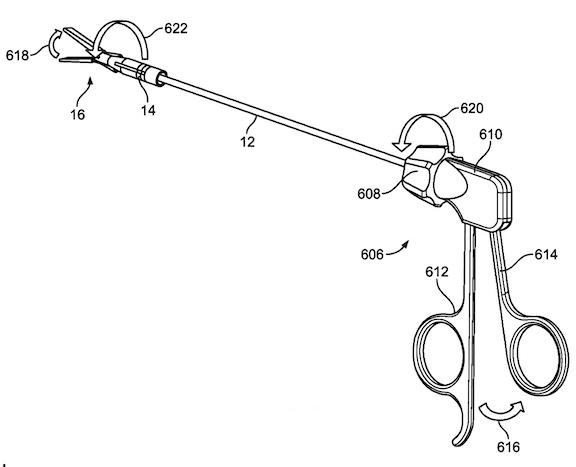Docket #: S09-117
No Scar Surgical System
A team of Stanford inventors has patented a system of surgical tools that eliminates visible scars by reducing ports crossing the abdominal wall. Unlike NOTES, single port surgery or needlescopic systems, the invention provides for standard tools that preserve standard operating techniques. Overall, this FDA 510(k) approved surgical system minimizes surgical trauma by reducing the size and number of incisions needed for abdominal procedures. This approach has both physical and psychological benefits for patients undergoing a variety of laparoscopic procedures.

Early prototype
Stage of Research - Prototype
The team has successfully tested a variety of prototypes and acquired FDA 510(k) clearance.
Applications
- Minimally invasive surgery, including:
- Laparoscopic surgery, such as appendix removal, gall bladder removal and hernia repair
- Cosmetic surgery
- Pediatric surgery
- Obstetric and gynecological surgery, such as uterus removal
Advantages
- Safety - safer surgery because the system mimics standard surgical technique and provides standard surgical tools.
- Speed - faster than other scar-free surgical techniques because it only requires surgeons to assemble tools across the abdomen; each assembly is anticipated to take seconds adding mere minutes to the overall procedure time.
- Scar-free -superior cosmetic result by reducing the trans-abdominal incision to a diameter that is below the body's natural scar formation response; also it reduces the number of laparoscopic trocars used in the retraction.
- Familiar instruments - minimal retraining with familiar surgical instruments.
- Multiple vectors of retraction - tissues and organs can be pushed and pulled to clear the surgical path.
Publications
- Chao, K. Z. J., Roop, J. A., Magee, G., Jou, R., Brewer, R., Pell, C. S., ... & Ruby, T. (2016). U.S. Patent No. 9,308,011. Washington, DC: U.S. Patent and Trademark Office.
- Pell, C. S., Duggan, B. J., Dong, H. Z. C., Ruby, T., Roop, J. A., Ticker, J. B., ... & Chao, K. (2018). U.S. Patent No. 9,861,272. Washington, DC: U.S. Patent and Trademark Office.
Related Links
Patents
- Published Application: WO2010114634
- Published Application: 20120083826
- Published Application: 20130331646
- Published Application: 20160287232
- Issued: 9,308,011 (USA)
- Issued: 9,861,272 (USA)
Similar Technologies
-
Force Control of a Permanent Magnet for Minimally-Invasive Procedures S08-115Force Control of a Permanent Magnet for Minimally-Invasive Procedures
-
Model-less method for controlling continuum and redundant robots S13-079Model-less method for controlling continuum and redundant robots
-
Improved surgical navigation for robotic endoscopes and catheters S16-327Improved surgical navigation for robotic endoscopes and catheters